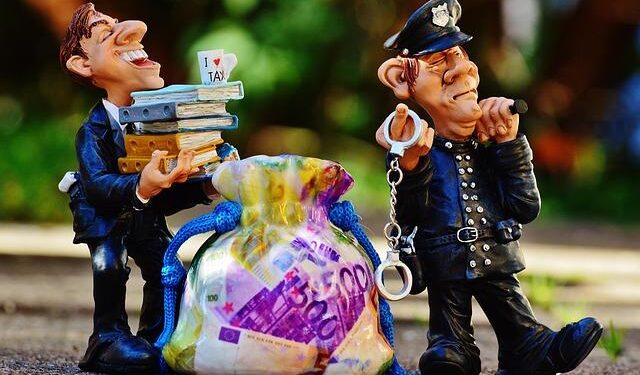After 38 months of implementation, Ireland’s Basic Income for the Arts pilot has offered valuable insights into supporting creative workers through guaranteed financial stability. Launched as a groundbreaking initiative to address the precarious nature of artistic careers, the program aimed to provide artists with a reliable income, enabling greater creative freedom and economic security. As the Basic Income Earth Network reviews the project’s outcomes, key findings are emerging that shed light on its impact, challenges, and lessons learned-offering a potential blueprint for arts funding in Ireland and beyond.
Impact on Artists Wellbeing and Creative Output
Over the course of 38 months, artists participating in the Basic Income pilot have consistently reported a significant improvement in their overall wellbeing. Freed from the immediate pressures of financial instability, many described experiencing reduced anxiety and increased mental clarity, allowing them to engage more deeply with their practice. Several participants highlighted the transformative power of this support, noting that it fostered a healthier balance between their creative and personal lives. The sense of security provided by the basic income grant has been instrumental in enabling artists to take creative risks and explore new mediums without the looming threat of economic hardship.
Moreover, the impact on creative output has been equally notable. Artists have cited a marked increase in productivity, experimentation, and collaboration. Key benefits observed include:
- Enhanced Focus: More time dedicated solely to artistic creation.
- Expanded Networks: The ability to participate in residencies and community projects.
- Innovation Boost: Freedom to pursue unconventional or longer-term projects.
- Mental Health Support: Improved resilience against creative blocks and burnout.
| Metric | Before Basic Income | After 38 Months |
|---|---|---|
| Average Weekly Creative Hours | 15 hrs | 27 hrs |
| Number of New Projects Started | 2 per year | 5 per year |
| Reported Stress Levels | High | Moderate |
| Community Collaboration Instances | 4 per year | 9 per year |
Challenges Faced During Implementation and Key Lessons
The pilot program encountered a range of obstacles that illuminated the complexity of integrating a basic income model within Ireland’s diverse artistic community. One primary challenge was ensuring equitable distribution across various disciplines and career stages, which required meticulous outreach and transparent criteria to avoid perceptions of bias. Additionally, the administrative burden of continuous monitoring and feedback proved heavier than anticipated, stretching resources and demanding adaptive data management solutions. The fluctuating nature of artistic income further complicated the measurement of impact, necessitating novel evaluation frameworks that could capture qualitative as well as quantitative outcomes.
- Inconsistent engagement: Artists’ varied schedules and commitments made regular communication difficult.
- Financial skepticism: Some stakeholders questioned the sustainability of the funding model beyond the trial period.
- Policy alignment: Navigating existing social welfare structures required careful coordination to avoid unintended disadvantages.
These hurdles revealed essential lessons crucial to refining future initiatives. A focus on building trust within the arts sector emerged as fundamental, emphasizing the importance of transparent governance and regular community consultations. Tailoring support structures to respect the non-linear careers and incomes of artists proved necessary, alongside fostering partnerships with cultural institutions to broaden the program’s reach and impact. Ultimately, the trial highlighted that successful basic income schemes within the arts demand not only financial input but also a nuanced understanding of the creative ecosystem’s rhythms and needs.
| Challenge | Lesson Learned |
|---|---|
| Ensuring equitable access | Implement targeted outreach for underrepresented groups |
| Data collection complexity | Develop mixed-method evaluation tools |
| Financial model skepticism | Engage in transparent communication about sustainability |
| Policy integration | Collaborate closely with welfare agencies |
Policy Recommendations for Sustainable Basic Income Models in the Arts
Drawing from the extensive 38-month pilot, it is clear that sustainable income models for artists must prioritize flexibility and inclusivity. Policymakers should embed adaptive payment structures that reflect the irregular nature of artistic work, ensuring that income support adjusts to periods of varying creative output rather than adhering to rigid, uniform disbursements. Moreover, recognizing diverse artistic disciplines and underserved communities can foster equity, bridging gaps in access and opportunity. Clear guidelines on eligibility must balance simplicity with comprehensive reach to avoid bureaucratic barriers that disproportionately affect emerging and marginalized artists.
Investment into accompanying infrastructure is equally crucial. This includes creating networks for peer support, mentorship, and professional development alongside basic income provisions – reinforcing self-sufficiency rather than dependency. The table below outlines key policy elements recommended for adoption based on the Irish experience:
| Policy Element | Recommended Approach | Expected Impact |
|---|---|---|
| Payment Flexibility | Variable monthly disbursements based on project cycles | Enhanced financial stability |
| Eligibility Criteria | Inclusive of emerging and non-traditional artists | Increased diversity & accessibility |
| Support Services | Access to workshops & networking platforms | Strengthened professional growth |
| Evaluation Framework | Regular impact assessments with artist feedback | Continuous program improvement |
In Conclusion
As the Basic Income for the Arts pilot in Ireland marks over three years since its inception, the insights gained offer valuable lessons not only for policymakers but also for cultural communities worldwide. The initiative has highlighted the potential of guaranteed financial support to stabilize artists’ livelihoods, foster creative freedom, and challenge traditional funding models. While challenges remain, the evidence gathered after 38 months underscores the importance of rethinking how societies value and sustain artistic work. As discussions continue, Ireland’s experiment serves as a vital reference point in the ongoing global conversation about basic income and the future of the arts.
















